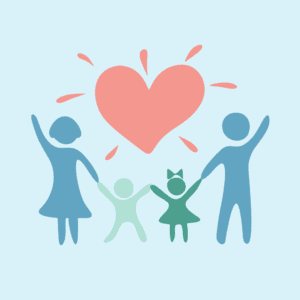No matter what your school looks like, chances are you’re helping students to effectively and peacefully manage conflict. We are all human and conflict is a part of our lives! Teaching students conflict resolution is one of my absolute favorite parts of being a school counselor; it’s fun and it has a huge impact. Your students need conflict resolution skills now, next year, and for their whole lives.
Classroom Guidance Lessons
One of the best ways to teach conflict resolution skills is to do just that – teach it! In an ideal world, you will have time in your guidance map to teach each class a whole unit on conflict resolution, tailored to your population’s needs. Here are a few conflict resolution unit ideas:

Whether you’re doing a multi-skill unit with the younger grades, focusing on anti-bullying with the middle grades, or diving into types of communication with the “big kids”, the key to effectively teaching them the skills they need is to include lots of opportunity for modeling and practice. You model, they discuss, student models, the class discusses, then they all practice in pairs or groups. For example, if we’re learning about how to ignore, we talk in detail about what this looks like and I show them how to ignore with their eyes, ears, mouths, and brains. Then we’ll go to a new conflict example and I’ll have a couple of students role play, asking for a volunteer to share what they saw their peers do. Finally, they’ll practice the skill of ignoring in small groups as I walk around and “bug” them.

As much as I love the unit approach to teaching conflict resolution (or any other meaty concept), I know some counselors are only able to teach ONE lesson all year about conflict resolution. When this is the case, I think the most impactful skill for our students to learn is the I-statement! My schools have seen huge improvements in class culture after this skill was taught (and practiced).

Supports for Teachers and Classrooms
 While great work happens in these lessons, we can contribute to our students’ peaceful problem-solving skills in other ways as well. One way to do this is through providing or posting visuals that teachers and students can refer to over and over again, like peaceful problem-solving options and conflict resolution sentence stems. Visuals are great in classrooms as well as common areas like the cafeteria and hallways.
While great work happens in these lessons, we can contribute to our students’ peaceful problem-solving skills in other ways as well. One way to do this is through providing or posting visuals that teachers and students can refer to over and over again, like peaceful problem-solving options and conflict resolution sentence stems. Visuals are great in classrooms as well as common areas like the cafeteria and hallways.
I find that kiddos also really benefit from talking through lots of different conflict scenarios. In classrooms that are really struggling with getting along, I give my teachers a set of conflict resolution task cards to use a few at a time during morning meeting. If they’re needing help with quality apologies, I give the teacher practice cards for those as well. I find that managing conflict is something teachers hate spending time doing so they’re invested in helping to proactively reinforce the skills!
In Vivo Coaching and Modeling
Conflict happens everywhere and I believe the best learning happens in context. There are opportunities to coach and model conflict resolution every day, all over your school. Here are some examples:
- In class lessons when students are working in small groups, conflict will pop up. This is the ideal time to coach them through sticky situations. Sit with them and help them listen to one another’s ideas, take turns, share materials, and disagree respectfully.
- Walking around the building, I often hear kiddos using really rude voices and words to make an important point. A quick “Please try that again more respectfully.” allows for a safe redo.
- Even with your best classroom management strategies, students will still sometimes make bad choices. This your chance to model using an I-message to share how you feel (“I feel frustrated when you interrupt me when I’m giving directions. Could you please wait until a better time to talk to your friends?”)
Mediation
Another way I teach conflict resolution to my students is through mediations using restorative justice practices. Especially in Spring time, I have lots of students self-referring due to conflict with one another. While I can often coach them through it and help them see their options, other times call for bringing both (or all!) parties together in my office. I have them sit face-to-face (for a twosome) or circle up if it’s a group. What happens next depends on the developmental level and comfort level of the students. Sometimes I pull out my talking stick, briefly explain it’s history and purpose, hand it to one of the students, and let them roll with it. While the goal is always for it to be as student-directed as possible, many of my students need significant coaching through the process. It’s intimidating to be assertive! This can look like me summarizing each side (especially if I’ve talked to the parties individually ahead of time), providing them with I-message and apology sentence stems, or helping them to see the others’ perspective and emotions.
What about you – how do you teach conflict resolution to your students?










Really, it is amazing article. Thanks a lot🥰